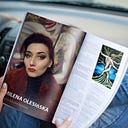Guy Ngan — New Zealand artist
Guy Ngan (3 February 1926–26 June 2017) was a New Zealand artist who worked across a large range of media, including sculpture, painting, drawing, design and architecture. He is known for his incorporation of Māori motifs such as the tiki. Many of his works are in prominent places, such as the tapestry in the Beehive and sculpture at the Reserve Bank, while many others are dotted around the country in smaller towns and suburban locations such as Stokes Valley.Ngan was born in 1926 in Wellington to Chinese parents Wai Yin and Chin Ting, but he called himself “Pacific Chinese”.During his young years, he was educated in China. In 1938 a Japanese bomb dropped next door while they were having breakfast. Ngan’s father took Guy and his brother to Hong Kong and put them on a boat to New Zealand and they never saw him again. Guy Ngan attended Newtown School but he was unhappy and then stayed with relatives in Miramar. In 1951, he studied at Goldsmith’s School of Art at the University of London. In the same year he was allowed entry to the Royal College of Art, in London. In 1954, he graduated and was given the Royal College Continuation Scholarship for one year. He was paid £600. In 1955 the British Council awarded him with a scholarship and an allowance of £12 a week and all travel expenses paid for.In 1956 he returned to New Zealand. He worked as a consultant at the architecture division for the Ministry of Works. He worked here until 1960 and then went to work for Stephenson and Turner Architects until 1970. Ngan then became the director of New Zealand Academy of Fine Arts for 20 years. During this time he encouraged New Zealand artists to promote their art talents at museums. He also encouraged Māori and cultural art.Ngan worked as a painter, artist, architect and designer. Many of his work are displayed in important and historical buildings across New Zealand, including the Beehive. Other public installations are at the Stokes Valley roundabout and the “Elevating Worm” sculpture in the Stokes Valley shopping centre
